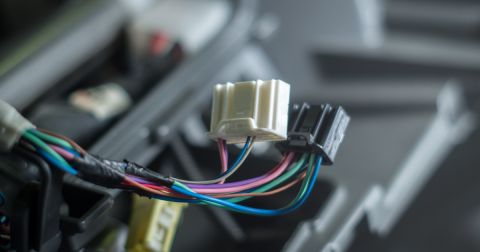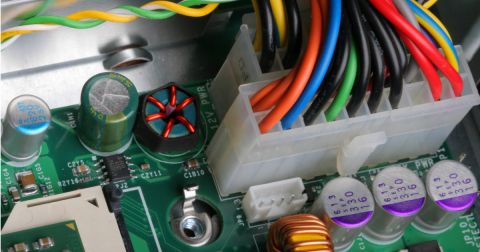Getting Started with Harness Design in Altium Designer 25

Cable harness design is an integral part of developing modern electronic devices. It plays a particularly important role in multi-board design projects, where the entire system consists of multiple cooperating modules such as a power supply, front panel, control board, backplane, and others.
In complex environments, precise planning of cable connections becomes crucial for ensuring the reliability of the system. A poorly designed harness can lead to interference, servicing difficulties, or even device damage. That’s why it is so important to design harnesses thoughtfully from the beginning, taking into account both electrical and mechanical requirements.
Properly prepared cable documentation not only minimizes the risk of errors during prototyping but also significantly facilitates the later stages of project development. Integrating the harness design with the main project in Altium Designer helps maintain consistency, clarity, and neatness throughout the engineering documentation, leading to greater efficiency of the design team.
Harness Design – What Does the Workflow Look Like?
Wire harness design can be compared to the classic PCB design process. In a standard PCB design workflow, we distinguish three main stages:
- Creating a schematic – defining logical connections between components.
- Designing the PCB layout – placing components and routing traces on the board.
- Generating project documentation – including the Bill of Materials, technical drawings, and production files.
For harness design, the workflow is quite similar: it is also based on a logical structure and visual representation of connections. The main elements of a wire harness project in Altium Designer are:

Figure 1: Overview of the harness project contents in Altium Designer
Schematic of the Wire Harness (*.WirDoc)
The *.WirDoc file presents the logical wiring diagram of the cable harness within the designed wire harness project. It serves a similar function as a traditional electrical schematic in PCB projects – it defines how the wires should be connected, in what configuration, and which types of connectors need to be used.

Figure 2: Wiring Diagram (Logical Connection) incorporating shielding and twisted pair wires
The wiring diagram (*.WirDoc) defines the logical structure of the wire harness. It shows how individual wires are interconnected within the system and how they link to specific connector pins or terminals. Each wire can be assigned properties such as type (e.g. single-core, shielded, multi-core), cross-section, insulation color, and signal function (e.g. GND, VCC, CAN_H, CAN_L).
A key aspect of this document is that it does not show the physical routing of the wires, but only the logical relationships between the elements. This allows the designer to focus on functional connectivity between components, regardless of how the harness will physically appear. The *.WirDoc forms the foundation for further physical layout design (*.LdrDoc) and production documentation generation.
Moreover, Altium Designer allows for automatic connection validation (Electrical Rule Check), which further enhances project safety and reduces the risk of errors before moving on to the layout design stage.
Layout of the wire harness (*.LdrDoc)
The *.LdrDoc file is a graphical document presenting the physical layout of the wire harness, i.e. its actual shape, the arrangement of wires, connectors, and mounting elements. In contrast to the schematic (*.WirDoc), which shows only logical connections, the *.LdrDoc provides a 2D representation of the physical layout of the harness — illustrating how it will be arranged on a panel, inside an enclosure, or along a mounting surface in an actual device or system.
In this view, wires are stretched and arranged spatially, considering their length, bending radii, connector positions, and branching points. One can also add descriptions of cable ties, protective tapes, heat shrink tubes, and other mounting accessories. Wires are routed within defined bundles, and their lengths are automatically derived based on the path they follow in the 2D layout. This helps ensure accurate manufacturing data while reflecting the physical organization of the harness.
In Altium Designer, the *.LdrDoc layout is created based on data from the *.WirDoc schematic, allowing for automatic mapping of logical connections in the physical layout. This ensures the designer that everything aligns with the intended function, while also enabling optimization of the harness layout for ergonomics, ease of assembly, and manufacturing requirements.
An additional advantage is the ability to generate 2D documentation (e.g., for manufacturers or assemblers), containing all necessary information: wire lengths, connector types, mounting points, and tolerances.

Figure 3: Harness layout using the physical view of connectors
Project Documentation – What Does It Include?
To make the project complete, appropriate documentation must be prepared. In the case of wire harness design in Altium Designer, the following documents are commonly used:
ActiveBOM (*.BomDoc)
The *.BomDoc file contains a detailed Bill of Materials, listing all components and elements used in the project. It includes supplier information, quantities, part numbers, availability, and pricing. ActiveBOM enables dynamic tracking of changes and automatic data updates, which significantly improves collaboration with the purchasing and production departments.

Figure 4: Active BOM of the sample wire harness
Draftsman harness drawing (*.HarDwf)
The *.HarDwf file is a detailed technical drawing of the wire harness, prepared in the Draftsman module. Its main purpose is to provide complete assembly and manufacturing documentation for production teams, assemblers, and system integrators.

Figure 5: Draftsman harness drawing example in Altium Designer
Unlike the schematic (*.WirDoc) and layout (*.LdrDoc), which are primarily intended for the designer, the *.HarDwf file contains a clear, graphical representation of the entire harness, ready for printing or export (e.g. to PDF, DXF, DWG). Such a drawing may include:
- An accurate physical view of the harness with wire lengths indicated,
- Wire labels, colors, channel numbers, and connection points,
- Wire and connector tables,
- Information on wire types, manufacturers, and part numbers, assembly instructions (e.g. tie placements, bending radii),
- A revision block and project metadata.
- Assembly instructions & manufacturing notes with any special handling or tooling requirements.
The *.HarDwf file is created on the basis of the data from the other harness design documents, ensuring full consistency between the logical, physical, and documentation layers. Changes in *.WirDoc and *.LdrDoc can be automatically synchronized within Draftsman.
What’s important, Draftsman allows one to create custom drawing templates containing, for example, company logos, project titles, revision fields, standard descriptions, and other required elements. This ensures the documentation is not only complete but also clear and professional, regardless of the recipient.
Conclusion
As you can see, Altium Designer offers a comprehensive set of tools for harness design—from the initial setup to the final documentation, all in one unified environment. Start your free trial today and experience the power of industry-leading software for your next harness design project.
Ready to Go Further with Harness Design? Join our 1-Day Instructor-Led Training for practical experience and expert guidance. Designed for engineers and educators, this focused course dives deeper into wire harness workflows, best practices, and advanced features. Register here to secure your spot.













